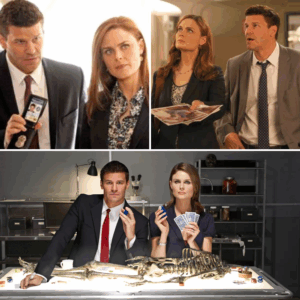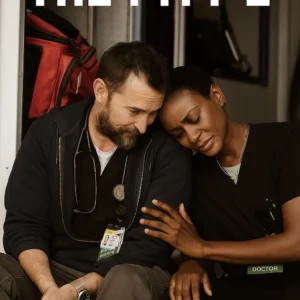When Panic Room hit theaters in 2002, it introduced audiences to a gripping thriller directed by David Fincher, but it also marked a pivotal moment in the career of a young Kristen Stewart. At just 11 years old, Stewart starred alongside Jodie Foster, a Hollywood icon, in a performance that left a lasting impression. Foster, a two-time Academy Award winner known for The Silence of the Lambs and Taxi Driver, recognized Stewart’s potential early on, predicting she would become a major star. In interviews and public appearances over the years, Foster has reflected on their time together, describing her awe at Stewart’s talent and authenticity. Their collaboration in Panic Room, a tense, claustrophobic thriller, not only launched Stewart’s career but also forged a bond that has endured for over two decades. This article, drawing from recent reports and social media insights, explores Foster’s foresight, Stewart’s breakout role, and the legacy of their work together.
The Making of Panic Room
Panic Room, released on March 29, 2002, is a taut thriller directed by David Fincher, known for Se7en and Fight Club. The film follows Meg Altman (Jodie Foster), a recently divorced mother, and her diabetic daughter Sarah (Kristen Stewart), who move into a New York brownstone equipped with a high-tech panic room—a fortified safe room designed for emergencies. On their first night, three burglars (Forest Whitaker, Jared Leto, and Dwight Yoakam) invade their home, seeking a hidden fortune stashed in the panic room. What unfolds is a high-stakes game of cat-and-mouse, with Meg and Sarah trapped inside the room while the intruders try to break in. The film’s claustrophobic setting, enhanced by Fincher’s meticulous direction and digital cinematography, creates a relentless atmosphere of suspense.
The casting of Panic Room was a saga in itself. Nicole Kidman was originally set to play Meg, but an injury forced her to withdraw after two weeks of filming in January 2001. Foster, then 38, stepped in with just a week to prepare, despite being pregnant during production—a fact the filmmakers concealed with careful wardrobe choices. Stewart, cast as Sarah, was 10 when filming began and turned 11 during production, celebrating her birthday on set with a mariachi band organized by Foster, as Stewart later shared on The Late Show with Stephen Colbert. David Fincher, seeking a tomboyish, authentic presence for Sarah, chose Stewart over a more “feminine and girlish” actress, a decision that shaped the film’s dynamic, as noted by Film School Rejects. Stewart’s casting proved fortuitous, as her chemistry with Foster became a cornerstone of the film’s emotional depth.
Jodie Foster’s Early Recognition of Stewart’s Talent
Jodie Foster, herself a child actor who starred in Taxi Driver at 12, saw something special in Kristen Stewart during their time on Panic Room. In a 2024 Rolling Stone interview, Foster recalled, “I remember just being in awe of this kid,” noting Stewart’s natural talent and authenticity at such a young age. Foster’s admiration was evident even during filming, as she organized a birthday party for Stewart’s 11th birthday, complete with a mariachi band, to remind her to embrace her childhood despite her intense focus on acting. Stewart recounted this gesture on The Late Show, saying, “She was like, ‘Don’t forget. You’re a kid.’ I was so obsessed with being on set and working and not going to school.” Foster’s protective instincts stemmed from her own experiences as a young actress, navigating the pressures of Hollywood.
Foster’s belief in Stewart’s potential wasn’t without initial doubts about her longevity in acting. In a 2019 interview with Stellar, Stewart shared that Foster thought she might not continue acting, suggesting she could “direct movies or go back to school” due to her introspective nature. “I understand why she would have thought that about me as a kid,” Stewart admitted, reflecting on her earnest demeanor. Yet, Foster’s doubts were overshadowed by her admiration, as evidenced by her 2018 CinemaCon speech, where she said, “I was pregnant at the time [of Panic Room], and I didn’t know if I was having a boy or a girl, and I just kept thinking: ‘If I have a girl, I want her to be just like Kristen Stewart.’” This heartfelt sentiment, echoed in posts on X, underscored Foster’s belief that Stewart was destined for greatness.
Kristen Stewart’s Breakout Performance
At 11, Kristen Stewart brought a raw intensity to Sarah Altman, a tomboyish, diabetic preteen who matches her mother’s resilience in the face of danger. Her performance, marked by quick-witted sarcasm and quiet vulnerability, earned her a Young Artist Award nomination and praise from critics. Roger Ebert noted that it was “a relief to see” Stewart’s authentic portrayal, a departure from her later Twilight persona, while Rotten Tomatoes reviews called her “fresh as newly rained snow.” Stewart’s ability to hold her own alongside Foster, a seasoned actress, was remarkable, especially in scenes where Sarah’s diabetes adds urgency to their predicament, such as when Meg risks leaving the panic room to retrieve her daughter’s medication.
Stewart’s preparation for the role was minimal but impactful. Having started acting at eight after being spotted in a school play, she had small roles in films like The Safety of Objects before Panic Room. Her tomboyish, androgynous quality, as Fincher described, suited Sarah’s character, who defies traditional cinematic tropes of femininity, as Lynne Stahl noted in The Velvet Light Trap. The mother-daughter dynamic between Meg and Sarah, rooted in mutual strength and gender nonconformity, resonated with audiences and critics, contributing to the film’s feminist undertones. Stewart’s growth during filming—both emotionally and physically (she grew three inches, per Fincher)—mirrored Sarah’s arc, making her performance a standout.
A Bond Beyond the Screen
The connection between Foster and Stewart extended beyond their on-screen roles. Foster, who has described Stewart as feeling “like a daughter,” became a mentor figure, offering guidance during a formative time. At the 2016 Hollywood Walk of Fame ceremony for Foster, Stewart spoke warmly, saying, “She’s been there for me… She’s always encompassed what I thought was the prime example of where you want to be.” Their 2024 reunion at the Sundance Film Festival, where Stewart received the Visionary Award, was a heartwarming moment, captured in photos with Foster’s wife, Alexandra Hedison. PEOPLE reported their embrace as a testament to their enduring bond, with Foster attending to support both Stewart and Hedison’s short film ALOK, which Foster executive produced.
Stewart has reciprocated Foster’s admiration, calling her a “real human being” who validated her at a young age. In a 2017 post on X by @StewartQuotes, she said, “She validated something in me at a really young age.” This mutual respect has fueled speculation about future collaborations, though no confirmed projects exist as of July 2025. Fans on X have expressed excitement at the prospect, with one user, @bellaxkristen, writing, “Imagine Jodie and Kristen in a new thriller together—cinema would never recover!”
The Legacy of Panic Room and Stewart’s Rise
Panic Room was a commercial success, grossing over $196 million globally and topping the box office during its opening weekend, surpassing The Matrix’s Easter record at the time. With a 75% approval rating on Rotten Tomatoes, the film was praised for Fincher’s direction and Foster’s performance, though some, like Vulture, found its ending underwhelming. Stewart’s role, while not the focal point of reviews, was a launching pad for her career. After Panic Room, she starred in films like Zathura: A Space Adventure and Into the Wild, before achieving global stardom as Bella Swan in The Twilight Saga, earning the BAFTA Rising Star Award in 2010. Her shift to indie films like Clouds of Sils Maria and Personal Shopper cemented her as a versatile actress, culminating in an Oscar nomination for Spencer in 2022.
Foster’s prediction of Stewart’s stardom proved prescient. As Hollywood Outbreak noted, Foster saw her “star power early on,” a sentiment echoed by Jesse Eisenberg at Sundance 2024, who praised Stewart’s “committed, authentic” performances. Stewart’s directorial debut, The Chronology of Water, set for release in 2026, further showcases her evolution, fulfilling Foster’s early belief that she might gravitate toward directing. Their shared history, rooted in a thriller that explored feminist themes and resilience, continues to resonate.
Why This Matters
Jodie Foster’s recognition of Kristen Stewart’s potential at 11 highlights her keen eye for talent, shaped by her own journey as a child actor. Panic Room not only showcased Stewart’s raw ability but also forged a mentorship that has endured through decades of Hollywood’s changes. The film’s exploration of strength, survival, and unconventional family dynamics, paired with Foster and Stewart’s authentic performances, makes it a timeless thriller. As Foster told Rolling Stone, Stewart’s ability to be “so feeling” at such a young age left an indelible mark, a testament to her star quality.
For fans, Panic Room is a reminder of Stewart’s roots and Foster’s enduring influence. Available on platforms like Fandango at Home, it’s a gripping, 112-minute watch that blends suspense with emotional depth. As Stewart continues to carve her path as an actress and filmmaker, and Foster remains a cinematic titan, their Panic Room collaboration stands as a pivotal moment—a spark that ignited a star’s rise, recognized by a legend who knew greatness when she saw it.





